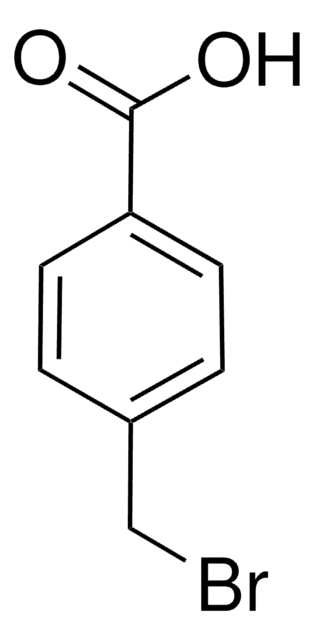Key Documents
693715
Terbium
foil, size 25 mm × 25 mm × 1 mm, 99.9% trace rare earth metals basis
Synonim(y):
Terbium-159
About This Item
Polecane produkty
Próba
99.9% trace rare earth metals basis
Postać
foil
przydatność reakcji
reagent type: catalyst
core: terbium
rezystywność
116 μΩ-cm, 20°C
rozmiar
25 mm × 25 mm × 1 mm
tw
3230 °C (lit.)
mp
1356 °C (lit.)
gęstość
8.234 g/mL at 25 °C (lit.)
ciąg SMILES
[Tb]
InChI
1S/Tb
Klucz InChI
GZCRRIHWUXGPOV-UHFFFAOYSA-N
Szukasz podobnych produktów? Odwiedź Przewodnik dotyczący porównywania produktów
Zastosowanie
Kod klasy składowania
11 - Combustible Solids
Klasa zagrożenia wodnego (WGK)
WGK 3
Temperatura zapłonu (°F)
Not applicable
Temperatura zapłonu (°C)
Not applicable
Środki ochrony indywidualnej
Eyeshields, Gloves, type N95 (US)
Wybierz jedną z najnowszych wersji:
Certyfikaty analizy (CoA)
Nie widzisz odpowiedniej wersji?
Jeśli potrzebujesz konkretnej wersji, możesz wyszukać konkretny certyfikat według numeru partii lub serii.
Masz już ten produkt?
Dokumenty związane z niedawno zakupionymi produktami zostały zamieszczone w Bibliotece dokumentów.
Produkty
A significant limiting factor for wearable electronics and wireless sensors is the finite amount of energy that can be stored in on-board batteries.
Istotnym czynnikiem ograniczającym elektronikę do noszenia i czujniki bezprzewodowe jest ograniczona ilość energii, którą można przechowywać w bateriach pokładowych.
The application of magnetism and magnetic materials pervades our modern civilization in the form of electrical power, communications and information storage.
Rechargeable solid-state batteries are becoming increasingly important due to wide-spread use in computers, portable electronics, and vehicular applications.
Nasz zespół naukowców ma doświadczenie we wszystkich obszarach badań, w tym w naukach przyrodniczych, materiałoznawstwie, syntezie chemicznej, chromatografii, analityce i wielu innych dziedzinach.
Skontaktuj się z zespołem ds. pomocy technicznej![[3aR-[2(3′aR*,8′aS*),3′aβ,8′aβ]]-(+)-2,2′-Methylenebis[3a,8a-dihydro-8H-indeno[1,2-d]oxazole] 98%](/deepweb/assets/sigmaaldrich/product/structures/134/031/294d2464-1571-4514-8e4c-c0cda1c1df7b/640/294d2464-1571-4514-8e4c-c0cda1c1df7b.png)





![(+)-1,2-Bis[(2S,5S)-2,5-dimethylphospholano]benzene kanata purity](/deepweb/assets/sigmaaldrich/product/structures/319/912/cec7b70f-bf7c-4a96-9f11-a73ae892e34c/640/cec7b70f-bf7c-4a96-9f11-a73ae892e34c.png)


![(RP)-1-[(R)-α-(Dimethylamino)-2-(diphenylphosphino)benzyl]-2-diphenylphosphinoferrocene optical purity ee: ≥99%](/deepweb/assets/sigmaaldrich/product/structures/361/819/e2566437-d2aa-4d81-8926-06a3497f90ce/640/e2566437-d2aa-4d81-8926-06a3497f90ce.png)